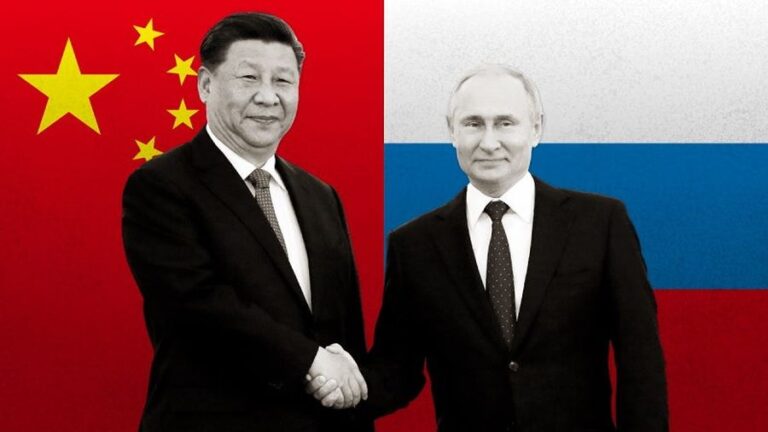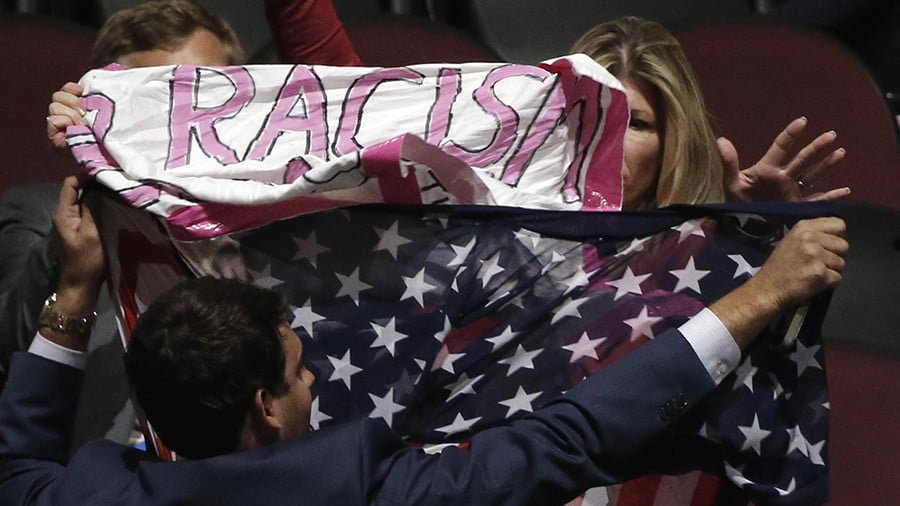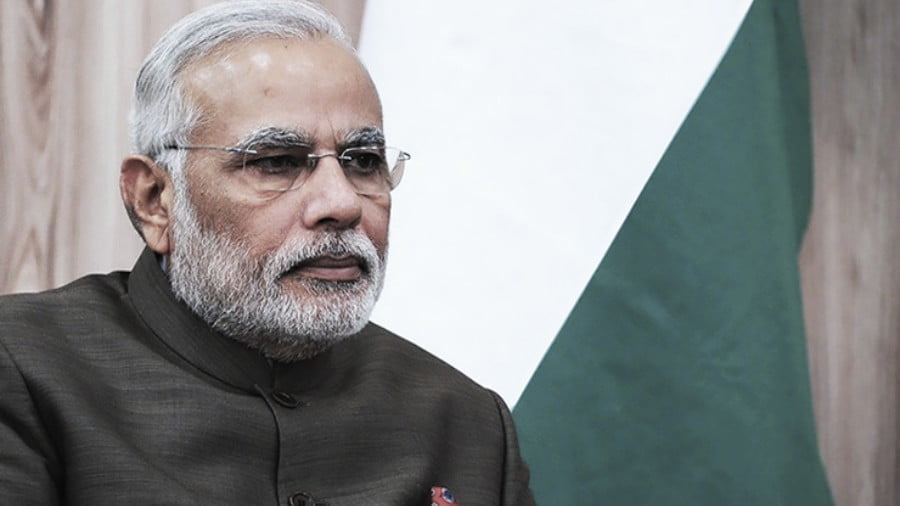Donglang/Doklam 2.0: Did China Make a Dummy Out of India?
The creeping revival of last year’s Donglang/Doklam Drama proves that China did in fact make a dummy out of India at the time, but that India had in turn made a dummy out of the rest of the world by keeping up the charade that it got China to back down, the narrative of which the US is finally exposing as it “goes for the kill” and prepares to win its Hybrid War on the Indian-Chinese Partnership.
The Donglang/Doklam Drama Never Really Ended
Most international outlets, both Mainstream and Alternative, haven’t been giving much attention to the creeping revival of last year’s Donglang/Doklam Drama, but this frozen conflict in the Himalayas is undoubtedly heating back up just in time for the first-ever 2+2 meeting between the US and India next month and the visit of the latter’s External Affairs Minister Sushma Swaraj to New York to attend the opening of the UN General Assembly (UNGA). Congresswoman Ann Wagner asked the US’ Principal Deputy Assistant Secretary of State for South and Central Asia told Congress Alice Wells at the end of last month during a Congressional hearing what the US and India should do about China’s resumption of military activities in the mountainous region near Bhutan. The exact wording of her question was as follows:
“Although both countries back down, China has quietly resumed its activities in Doklam and neither Bhutan nor India has sought to dissuade it. China’s activities in the Himalayas remind me of its south China Sea policies. How should our failure to respond to the militarisation of the South China Sea inform the international response to these Himalayan border disputes?”
As if on command, just one day afterwards, Indian media reported that China has “5 Sheds, 90 Army Tents, (and) 30 Heavy Vehicles” in Donglang/Doklam, though unnamed sources from the Indian military curiously downplayed these claims and “attributed this more to the rotation of troops and winter stocking than a desire by China to strengthen its presence”. It’s difficult to tell what’s really happening on the ground, but it seems like New Delhi is still covering up for backing down from Beijing last year, exactly as the author analyzed at the time. Modi, despite his country being the US’ only “Major Defense Partner” and in a 100-year-long military-strategic partnership with it, still wants access to BRICS’ Chinese-controlled alternative financial institutions in a bid to “balance” (“multi-align”, in Indian parlance) between the unipolar and multipolar worlds.
Playing The Fool
That’s why his government promoted the narrative that both sides pulled back from the brink of conflict in Donglang/Doklam, even though this was for all intents and purposes a unilateral Indian measure that not even Chinese government representatives felt compelled to go along with. Chinese Ministry of Foreign Affairs spokeswoman Hua Chunying told reporters that “The Chinese frontier defense force will continue to patrol and garrison in the Doklam area…The situation at the spot has changed, and China will adjust and deploy according to (the) current situation” but also crucially remarking that China will “exercise its sovereign rights according to the historical treaty and guard its territorial sovereignty”. It was only in connivance with US-controlled Mainstream Media all across the world that this was deceitfully presented as a mutual withdrawal.
To be blunt about it, China made a dummy out of India while India in turn made a dummy out of the rest of the world by lying to them and pretending that Beijing backed down when nothing of the sort ever happened.
The question that immediately comes to mind is why the US waited so this long to call everyone out on this charade, but the explanation is a sensible one and it has to do with the Trump Administration wisely not wanting to put its new Indian partner under unbearable pressure to the point where it feels compelled to resist America’s demands in order to “save face”. Pushing “too hard” on New Delhi might have endangered the 100-year-long military-strategic partnership that Washington later clinched with it a few months afterwards, even though it’s likely that the US egged India on to confront China this entire time. Modi, however, seems to have acted independently of Trump in reaching a deal with Xi just prior to the BRICS Summit in China last year, which may have made the US back off a bit.
The Indian Domino Effect: First Iran, Then Russia, And Finally China
Now, though, the US knows that it can “go in for the kill” when it comes to India by forcing its hand through a non-kinetic Hybrid War that focuses on coordinated diplomatic, media, and economic offenses in order to coerce it into submitting to the Trump Doctrine. One of the top US diplomats for South Asia just shed light on the Donglang/Doklam secret that India’s been trying to cover up for the past year, which in turn triggered some of its allied media in the country to “leak” some details about this that the humiliated Indian military hurriedly tried to downplay. At the same time, the US’ threat of “secondary sanctions” against any country that continues to purchase Iranian natural resources after the November reimposition of sanctions gradually exposed India’s public refusal to abide by the extraterritorial application of American law as an illusion after recent reports indicated that it’ll cut its consumption by half to win a temporary waiver from any forthcoming punitive restrictions.
This is very similar to what India’s presently doing in connection with its purchase of Russian weaponry in order to avoid looming CAATSA sanctions after committing to buying the S-400 anti-air defense system from Moscow. The country is eligible for a waiver from these sanctions pursuant to Section 1294 (1)(C)(i) of the US’ National Defense Authorization Act of 2019 as long as it “is taking or will take steps to reduce its inventory of major defense equipment and advanced conventional weapons produced by the defense sector of the Russian Federation as a share of its total inventory of major defense equipment and advanced conventional weapons over a specified period”, which it already evidently is given how American and “Israeli” weapons suppliers are systematically chipping away at Russia’s former dominance of the Indian arms market. Section 1294 (1)(C)(ii) also provides a way out if India “is cooperating with the United States Government on other security matters that are critical to United States strategic interests”, or in other words, becomes a vassal.
After having successfully pressured India into commencing a downward trajectory of strategic relations with its previously close Iranian and Russian partners, the only thing left for the US to do is replicate this vis-à-vis China in order to seize full strategic control of the South Asian state and turn it into the regional New Cold War proxy that America needs it to become if it’s to stand any chance at protecting its fading hegemony in the Eastern Hemisphere.
The American Hybrid War on the Indian-Chinese Partnership
India wants to procrastinate as long as possible – probably indefinitely, if it could – on entirely committing to the US’ strategic pushback in Eurasia so as to retain “strategic flexibility” through its erstwhile policy of “multi-alignment”, hence why it was accurate to describe it as being at a crossroads earlier this summer before the abovementioned details about its newly modified approaches towards Iran and Russia were indirectly confirmed, though this is unfeasible in the face of heavy American pressure. After quietly capitulating to the US on those two fronts, it’s all but a fait accompli that it’ll do the same on the Chinese one, though given the immediate security implications of doing so, it’s understandable why the Indian military is reluctant to go along with the US’ possibly envisioned fast-moving timeline for actualizing this. The timing is such that the US choreographed Congress’ revelation about China’s military moves in Donglang/Doklam a little over a month before the 2+2 talks with India in order to ensure that they’d be on the agenda.
The next step of this two-pronged Hybrid War on the Indian-Chinese Partnership is for the outcome of that meeting to pave the way for the US and/or India to confront China at the UNGA or at the very least rally the other leaders of the “China Containment Coalition” behind the scenes at this event. The US finally has India right where it wants it after the clumsy and irresponsible execution of New Delhi’s “multi-alignment” policy disastrously failed to safeguard the country’s “strategic autonomy” and instead placed it on the path of becoming America’s premier “Lead From Behind” subordinate in South Asia, though with the promise of having its proxy status “prestigiously” expanded across the entire Afro-Bengal (“Indian”) Ocean region in exchange for its strategic submission. The only thing left for the US to do now is provoke another worsening of Indian-Chinese relations so as to ensure that New Delhi agrees to sign a military communications pact (COMCASA) with it that would give the Pentagon full proxy control over its armed forces, ergo the timed revival of the Donglang/Doklam Drama.
The False Hope Of BRICS And The Silk Road
It shouldn’t be seen as a coincidence that the US exposed India’s cover-up of last year’s Donglang/Doklam “resolution” just prior to next month’s thrice-delayed 2+2 talks and the upcoming UNGA opening session at the end of September. At the time, China made a dummy out of New Delhi, which readily played the fool and went on to try and deceive the rest of the world by spinning the fake news narrative that both sides mutually withdrew their forces even though Beijing’s still remained in the area. The US stayed silent for a while because it didn’t want to “push its luck” and put overbearing pressure on India until it had all of its “ducks in a row” and had cornered it as planned. Now, after having successfully weaponized economic instruments (sanctions) to coerce India into de-facto downgrading the core of its strategic relations with Iran and Russia (energy consumption and arms purchases, respectively), the US is “going in for the kill” after knowing that India has no one else to turn to.
If its membership in BRICS was as “game-changing” as the organization’s proponents misleadingly claim, then India would have successfully sought its financial services to avoid having to submit to the US’ sanctions pressure regarding Iran and Russia, but that obviously didn’t happen and this further exposes the gross exaggeration of BRICS’ present role in the global economic system. BRICS couldn’t save India’s time-tested and trusted energy and military partnerships with Iran and Russia from being force into a downward trajectory in response to American pressure, so there’s little chance that it’ll save the untested and distrustful ties between it and China if the US is about to successfully revive the Donglang/Doklam Drama between them after humiliatingly exposing India’s hyper-jingoistic declarations of “victory” last year as nothing more than a Bollywood charade. Of course, an unexpected resolution of their border dispute could offset this dark scenario and give India some breathing space, but that would just provoke the US to strangle it with sanctions that could only be relieved by signing up for the Silk Road.
It’s highly unlikely that India will join China’s One Belt One Road (OBOR) global vision of New Silk Road connectivity even in the event of a lopsided border deal in its favor because it rejects CPEC’s transit through a northern Pakistani region that it claims as its own per its maximalist approach to the Kashmir Conflict and is also afraid of having its domestic market overwhelmed with cheap Chinese goods. These two factors combine to drastically diminish the odds that India will stand up to the US and avoid being drawn back into another round of American-encouraged Donglang/Doklam Drama with China because it simply has no other realistic recourse after setting fire to its strategic bridges with Iran and Russia (though having not yet burned them down completely). It also needs to be kept in mind that the US is using India as a geopolitical proxy against China not just to sabotage the Silk Road, but to also put pressure on the People’s Republic to enter into unilateral concessions in the so-called “trade war”.
Concluding Thoughts
The end result is that the revival of the Donglang/Doklam Drama might not be as much of a public phenomenon as it was last year if it silently achieves its primary objectives of getting India to surrender the rest of its military autonomy to the US through COMCASA and possibly even gets China to enter into economic concessions towards the US, but it should nevertheless be appreciated for the strategic role that it plays in waging the US’ Hybrid War on the Indian-Chinese Partnership. There wouldn’t be anything to weaponize in the first place had India not deceived the world by pretending that its withdrawal from Donglang/Doklam was reciprocated by the Chinese, but since it manufactured this fake news story in order to simultaneously present itself as a “strong” Great Power to the rest of the world and appeal to the hyper-jingoist sentiments of the ruling party’s anti-Chinese Hindutva base ahead of state elections, it essentially gave the US the narrative rope to hang it with a year later.







